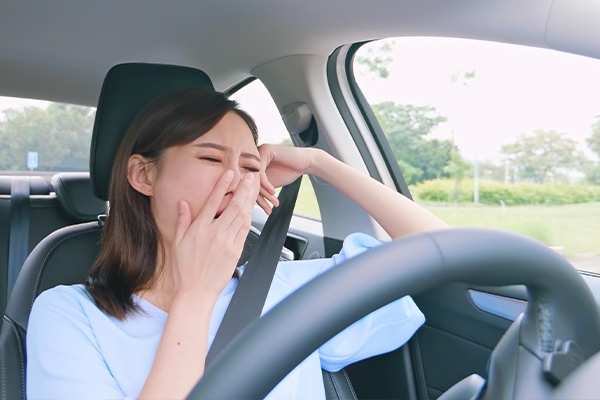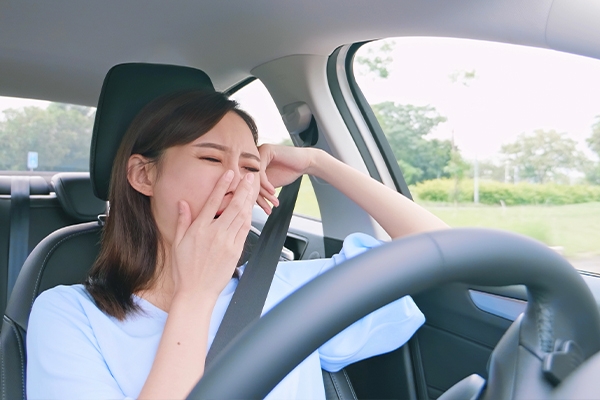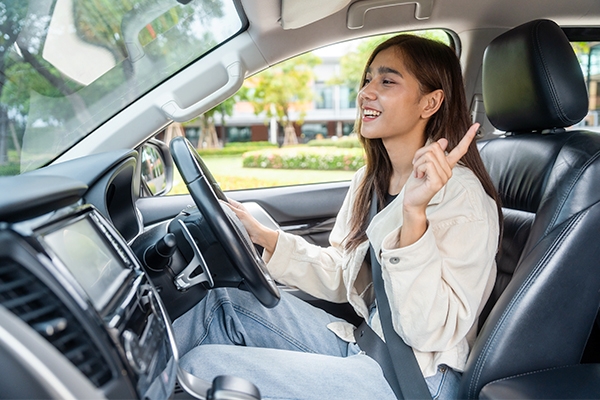Microsleep: A Short Sleep That Can Be Fatal

Imagine you’re on a quiet road. You’re starting to feel sleepy but trying to stay awake. Your eyelids feel heavy, your vision blurs, and everything darkens. A few seconds later, your head jerks violently, waking you up as if something had just happened.
Before you know it, you’ve had a microsleep—a short sleep that lasts only a few seconds but can be fatal, especially while driving. What exactly is microsleep, and why is it so dangerous? Let’s find out more!
What is microsleep?

Microsleep is a brief episode of sleep that usually lasts less than 30 seconds. Unlike normal sleep, it occurs suddenly and often without notice.
This condition can develop while driving, watching television, reading a book, or working. If it occurs in a dangerous situation, such as while driving, microsleep can lead to fatal accidents.
Causes of microsleep
Several factors can trigger microsleep, including:
1. Lack of sleep
Lack of sleep makes the brain tired, so looking for ways to replace lost sleep time is necessary. If someone continues to force themselves a lack sleep, the brain can automatically enter the microsleep phase. About one in every five adults experience chronic sleep deprivation, which often causes:
- excessive daytime sleepiness;
- irritability;
- poor performance;
- impaired concentration and memory.
2. Circadian rhythm sleep disorders
The circadian rhythm regulates the body's sleep-wake cycle. Going to bed and waking up late can disrupt this balance, leading to hormonal changes, fatigue, and poor sleep.
For example, going to bed at 4 a.m. and waking up late is not as healthy as going to bed at 10 p.m. and waking up at 6 a.m.
3. Delayed sleep phase syndrome
If a person frequently changes their sleep time, the brain can become confused and have problems regulating sleep naturally.
For example, someone who sleeps late on weekends but goes to bed early on weekdays may experience sleep disorders that trigger microsleeps.
4. Genetic factors
Some people are genetically predisposed to sleeping more than others. Individuals who fit into the “long sleeper” group need about 10 hours of sleep to feel refreshed, while those who fall into the “short sleeper” group only need 4-5 hours.
Signs of microsleep
Some signs that may indicate someone is experiencing microsleep include:
1. Excessive yawning or blinking
People who experience microsleep often close their eyes partially or entirely. Research shows that the eyes move more slowly before a microsleep episode occurs.
2. Waking up because of a jerk in the head or body
One of the hallmark signs of microsleep is a sudden head fall forward or a jerk in the body when awakened.
3. Not being aware of changes in the environment
People who experience microsleep may not realize that they have just fallen asleep and feel as if they have only momentarily lost focus.
How to treat and prevent microsleep

To reduce the risk of microsleep, make sure you get enough sleep. Adults are advised to sleep for 7–9 hours per night. Some ways to improve sleep quality include:
- Avoiding caffeine in the afternoon and evening.
- Switch off electronic devices before bed.
- Creating a calming bedtime routine, such as reading a book or taking a warm bath before bed.
- Keep the bedroom comfortable with dim lighting and a comfortable temperature.
- Taking a power nap for about 20 minutes.
Safe driving tips to prevent microsleep
If you feel drowsy while driving, stop and take a rest immediately. Some signs that you need to pull over include:
- driving off the road without realizing it;
- yawning repeatedly;
- eyelids feel heavy.
To stay awake while driving:
- Find a friend who can take over for you if necessary.
- Listen to fast-paced music or an interesting podcast.
- Take a rest if the drive is long.
Microsleep may seem trivial because it only lasts a few seconds, but its impact can be huge, especially when driving. If you often experience excessive daytime sleepiness, it could indicate that your body needs more rest.
Get enough sleep every night and always be alert, especially when driving, for your and others' safety.



